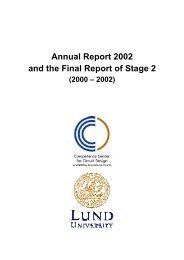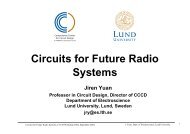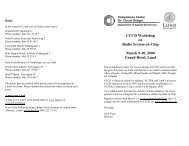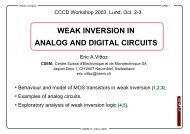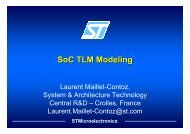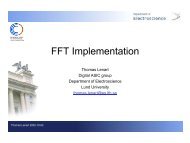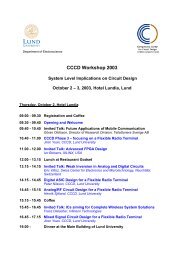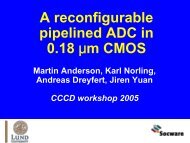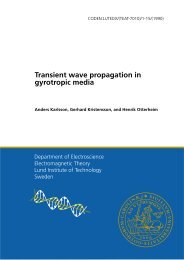Design of Antennas for Handheld DVB-H ... - Lunds tekniska högskola
Design of Antennas for Handheld DVB-H ... - Lunds tekniska högskola
Design of Antennas for Handheld DVB-H ... - Lunds tekniska högskola
Create successful ePaper yourself
Turn your PDF publications into a flip-book with our unique Google optimized e-Paper software.
Major operational disadvantages <strong>of</strong> microstrip antennas are their low efficiency,<br />
low power, high Q and very narrow frequency bandwidth. These drawbacks are<br />
avoided by building antennas on thick low-permittivity substrates, where larger<br />
bandwidth and efficiency are achieved.<br />
The four most popular configurations that are used to feed microstrip antennas are<br />
the microstrip line, coaxial probe, proximity and aperture coupling. These are<br />
displayed in figure 3.2. The microstrip line feed (figure 3.2 a) is easy to fabricate,<br />
simple to match by controlling inset position and rather simple to model.<br />
However, this structure cannot be optimised either as an antenna or as a<br />
transmission line, because the requirements <strong>for</strong> both are contradictory. This means<br />
that some compromise must be made, in which the feed line does not radiate too<br />
much at the discontinuities.<br />
Coaxial line feed (figure 3.2 b), where the inner conductor <strong>of</strong> the coax is attached<br />
to the radiation patch and the outer conductor with the groundplane, are also<br />
widely used. The coaxial probe feed is also easy to fabricate and match. However,<br />
it has narrow bandwidth like the microstrip line feed and it is more difficult to<br />
model, especially <strong>for</strong> thick substrates.<br />
Of the four different feeds described here, the proximity (figure 3.2 c) has the<br />
largest bandwidth and is somewhat easy to model. However its fabrication is<br />
somewhat more difficult. The length <strong>of</strong> the feeding stub and the width-to-line<br />
ratio <strong>of</strong> the patch can be used to control the match.<br />
The aperture coupling (figure 3.2 d) is the most difficult <strong>of</strong> all four to fabricate<br />
and has narrow bandwidth. The aperture coupling consists <strong>of</strong> two substrates<br />
separated by a ground plane. On the bottom side <strong>of</strong> the lower substrate there is a<br />
microstrip feed line whose energy is coupled through a slot on the ground plane to<br />
the patch. This arrangement allows independent optimisation <strong>of</strong> the feed<br />
mechanism and the radiating element. Matching is typically per<strong>for</strong>med by<br />
changing the width <strong>of</strong> the feed line and the length <strong>of</strong> the slot [28, 29].<br />
28



